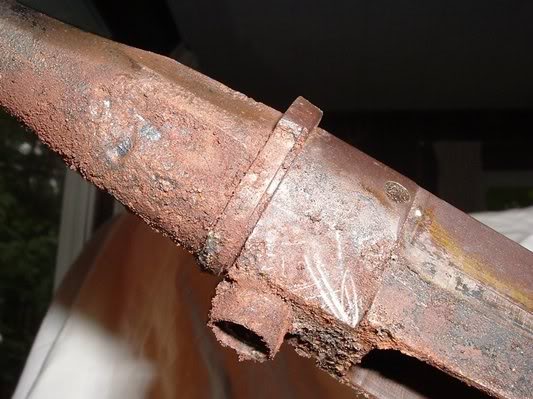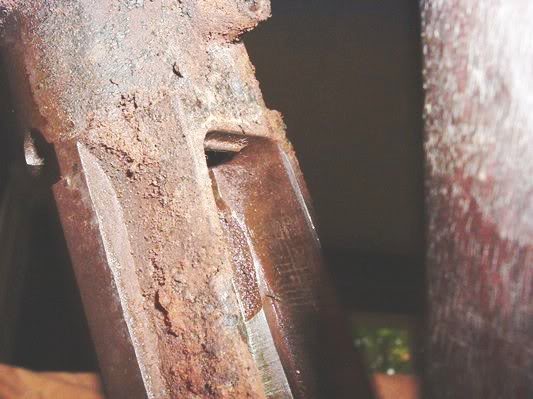-
FREE MEMBER
NO Posting or PM's Allowed

 Why are so many #5s called Malaysian?
Why are so many #5s called Malaysian?
Were these types without the fore-cap stored in Malaysia for many years after the '56 insurgency?
My second #5 (all-matching) appears to be one of these and has the very dark wood finish.
Am a very late-bloomer with guns and my gun buddies who like some milsurps are not interested in LEs.
Information
 |
Warning: This is a relatively older thread
This discussion is older than 360 days. Some information contained in it may no longer be current. |
|
-
10-30-2009 01:52 AM
# ADS
Friends and Sponsors

-
Banned

-
Advisory Panel


Specifically, a group of No.5s were imported about four years ago. It is generally believed that they were police surplus from the Malayan gov't. Condition was good to fair. Some have socket markings, "FMP" and some had a brass round id disc inletted into the buttstock. Forestocks with or with the ferrule have nothing to do with them being from Malaya.
-
The Following 2 Members Say Thank You to breakeyp For This Useful Post:
-
FREE MEMBER
NO Posting or PM's Allowed

Laufer, Most of the No.5s that were imported into the US had seen service in the Pacific Rim. First by the military and then police. One of mine is marked 'FMP' (roughly, Federation of Malaysain Police tho' I have seen other interpretations) and under the cosmo had, in old typewriter font a note, cellophane taped to the buttstock that read "Sing. Pol. Dept.". Unfortunately it disintegrated while gently trying to remove and save it.
Those from the Pacific Rim are usually identified by varying levels of rust damage under the furniture, primarily under the fore end at the action body.
Brad
-
Legacy Member

FMP is a Malaysian marking? That would be on the buttsocket, right? This is interesting, as my rifle has an FMP marking on the buttsocket. The stock also had a really heavy lacker, and some parts had pitting from corrosion; the stock actually was from another No. 5; the serial number just had Xs put over it and my rifle's number stamped below it. The stock also had a bad gouge around the band that allowed it to move freely, meaning the handguard would jump off when you shot it; fixed it with some wood dough though, although it looks ugly.
-
-
FREE MEMBER
NO Posting or PM's Allowed

"That would be on the buttsocket, right?" --bigstick61
Yes. Although mine also had lacquer, or shellac lovingly applied with a mop, it was in pretty good condition overall.
Brad
-
Here's the appropriate flag
-
Thank You to Amatikulu For This Useful Post:
-
Ed's pictures show what condition the rifles got into in Malaya. It was extremely harsh - with a capital H - on weaponry, kit and men. But once they went through the big Base Workshop system, they'd come out like new. The worst rifles were those blued with the pre-phosphate 'controlled corrosion' method of blueing. Once those rifles (and pistols, the little Enfields were the worst) got within 100 miles of the edge of the jungle or swampland, they'd start to what we called 'bleed' in that you'd start to see rust bubbles forming as if from nowhere. A bit like a Leyland car or MGB wing/fender bottoms. It was downhill then as nothing would stop it, not even the hot oil bath. But once they were call-in and stripped, beaded and phosphated, then they'd go on for a long time. Of course, 'a long time' is relative but every 3 or 4 years or so would be a reasonable wear time in those climates.
I suppose those rifles that were sold off in the late 70's onwards from the Pacific rim nations will all be pretty dire now, not having the huge Base Workshop facilities that we had and were able to provide. We did all of the FMP and Singapore Police weaponry, the Fijian Army (quite good kit). The man running the programme for the Singapore police was a great bloke to us called Mr Soliano and very often brought in a crate of Tiger beer or whatever and treated us to a Chinese meal out in Robinsons one Christmas. Has anyone got a Singapore Police Bren marked SPF by the LB serial number. The woodwork got a bit of a battering in the jungle and in the lorries but the hot liseed bath made it as waterproof as it was ever going to get.
I seem to remember the Malayan Police flag had a crown at the top..... but maybe not after independence......., or maybe it had a Malayan Kings crown
I digress.........................
-
-
FREE MEMBER
NO Posting or PM's Allowed

Peter, Do you know if it was lacquer or shellac that was slathered on the carbines?
TIA,
Brad
-
Legacy Member


Originally Posted by
bradtx

"That would be on the buttsocket, right?" --bigstick61
Yes. Although mine also had lacquer, or shellac lovingly applied with a mop, it was in pretty good condition overall.
Brad
Since I had to remove the lacquer from the areas I was going to fix, I just got rid of it all and put on an oil finish. I hadn't realized by LE came from Malaysia, although the thought poppoed into my head once when I heard that the Malaysians eventually started putting alot of lacquer onto their stocks to keep out the moisture.
An interesting thing on mine is that where there is heavy piting from corrosion, the rust is usually gone and there is actually parkerizing over where I would imagine the metal would be white, which as far as I know indicates the weapon was refinished.
-















 Register To Reply
Register To Reply
















